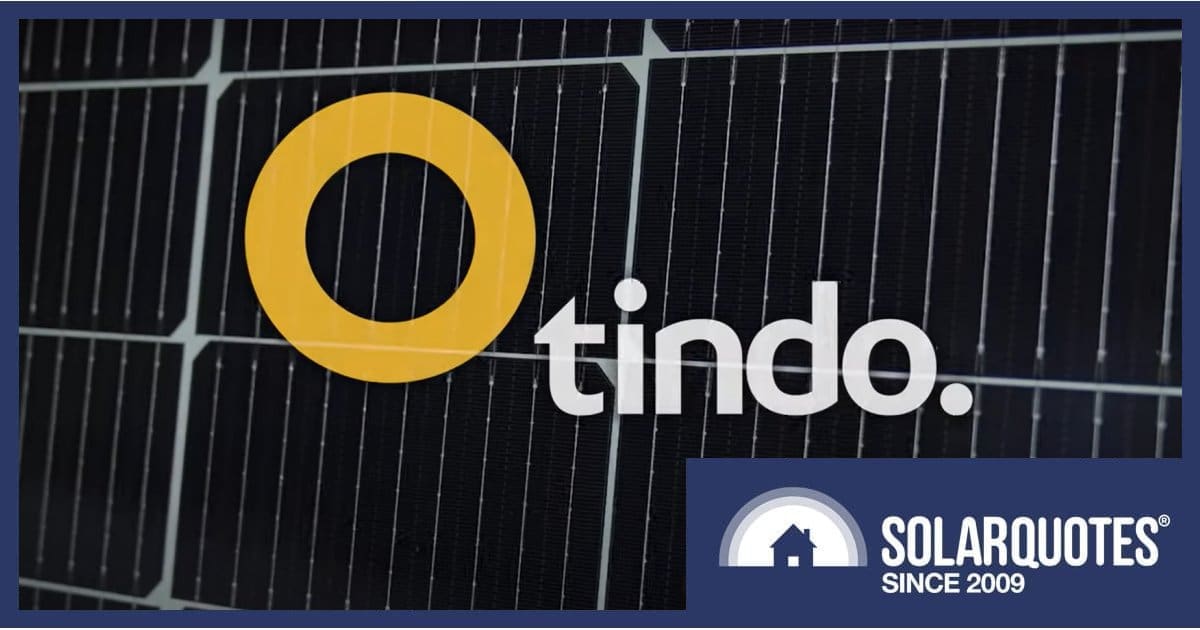Australia’s only solar panel manufacturer has inked an agreement with the country’s largest aluminium extruder for the supply of module frame materials.
Tindo Solar has a manufacturing facility in Adelaide’s Mawson Lakes where it produces solar panels using imported cells and other components. In an effort to include more local content in its products, Tindo has entered into an initial supply partnership involving Capral Aluminium’s “LoCAl” extruded product, reportedly for use with Tindo’s 425W ‘Walara’ modules1.
“We are committed to integrating Australian-made components into our solar panels, and Capral Aluminium is a vital partner in this effort,” said Tindo Solar CEO, Richard Petterson.
What Is LoCAl Aluminium?
Production of aluminium is energy and emissions intensive. According to Capral, average carbon emissions of primary aluminium produced globally is approximately 12.46 kg carbon-dioxide equivalent (CO2e) per kilogram. Capral says LoCAl emission intensities are significantly lower:
- 8kg CO2e/kg AL – LocAL Green
- 4kg CO2e/kg AL – LocAL Super Green
Which LocAL type Tindo has opted for wasn’t mentioned.
Lower-emissions aluminium can be achieved through use of renewable energy sources and recycling more scrap. Australia’s largest single energy consumer and biggest aluminium smelter Tomago Aluminium has a goal of bringing its sources of energy as close to 100% renewable as possible.
In 2022, Capral Aluminium signed an agreement with Tomago to supply approximately 550 tonnes of production scrap annually for remelting. Recycling scrap requires only 5% of the energy needed to make virgin aluminium according to Capral and the company says 25% of the total aluminium it extrudes in 2024 will have been produced with carbon emissions lower than 8kg CO2e per kilogram.
Capral has committed to net zero by 2050 and is working actively on reducing Scope 1 and Scope 2 emissions. Scope 1 emissions are direct emissions from sources a company owns or controls, while Scope 2 are indirect emissions associated with generation of energy consumed.
From Little Things …
While Capral’s initial focus is on meeting Tindo’s current production requirements, the firm is keen to support the company’s future Gigafactory with locally extruded aluminium.
“This venture is more than just a significant step for Tindo; it represents a milestone for the Australian manufacturing sector, showcasing our potential to lead in sustainable energy solutions and build a more resilient local supply chain,” said Capral’s Luke Hawkins.
Currently, Tindo’s manufacturing facility is capable of producing 150 MW of modules a year, but the firm’s $90-100 million Gigafactory to be built elsewhere will boast 1GW manufacturing capacity per annum; capable of producing 7,000 panels per day.
To support this project, which could create 250 – 300 jobs, Tindo plans to apply for funding under the Federal Government’s Solar Sunshot program being delivered by the Australian Renewable Energy Agency (ARENA). The initiative is allocating up to $1 billion to support local solar PV manufacturing over 10 years.
“The development of our Gigafactory, supported by Capral, will not only advance our production capabilities but also bolster the Australian renewables supply chain,” said Mr. Petterson.
Tindo estimates that 1GW+ is the scale required to kick-start a domestic downstream supply chain, and in May this year said the firm was engaged in discussions with local manufacturers of glass, aluminium, solar cells and other components.
Tindo Solar was founded in 2011 and the original factory had a manufacturing capacity of 60 megawatts before the expansion to 150 MW; which commenced operations in 2022.
Tindo Solar panels are at the pricier end of the spectrum, but if you’re set on buying good quality Australian-manufactured modules, they are currently the only show in town. You can compare specifications and estimated pricing of the company’s modules with a bunch of other brands on SolarQuotes’ solar panel comparison table.
Footnotes
- I wasn’t able to find any information about Walara solar panels on Tindo’s website. ↩


 RSS - Posts
RSS - Posts



So is this more direct taxpayer subsidisation of Green energy? This article states “Tindo … are currently the only show in town”. Does that mean the billion dollar Solar Sunshot program is basically configured to support them, or is there actually Australian polysilicon production, production of ingots, wafers, or solar PV cells?
The Aluminium contract applies to what, 1 of the 4 Walara panels offered by Tindo, none of the Black panels, and none of the Kara panels? I could be mistaken – the Tindo site doesn’t offer easy to find info.
Solar quotes would be well advised to be a little more skeptical about publicity material.
Can you be more specific?